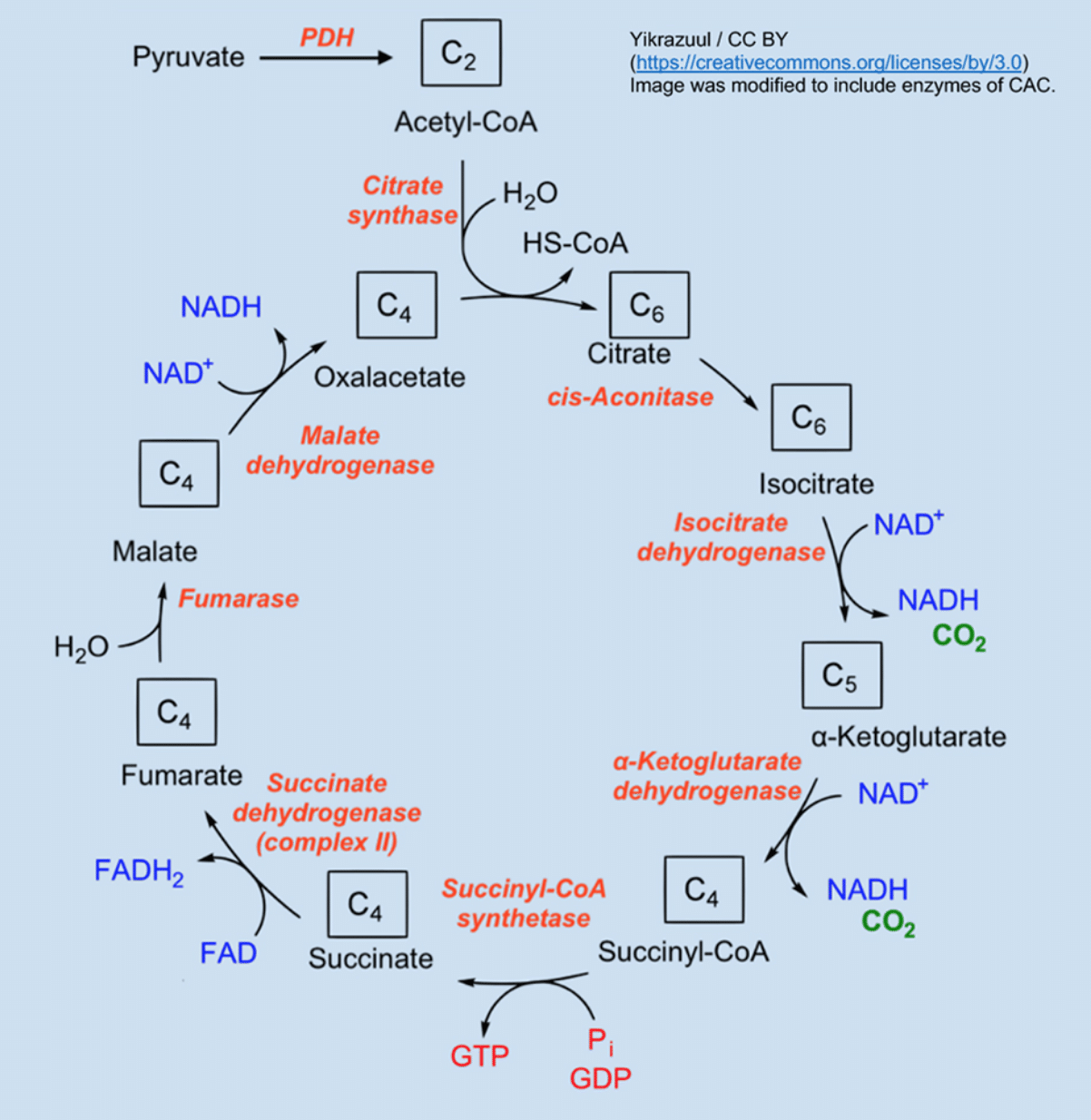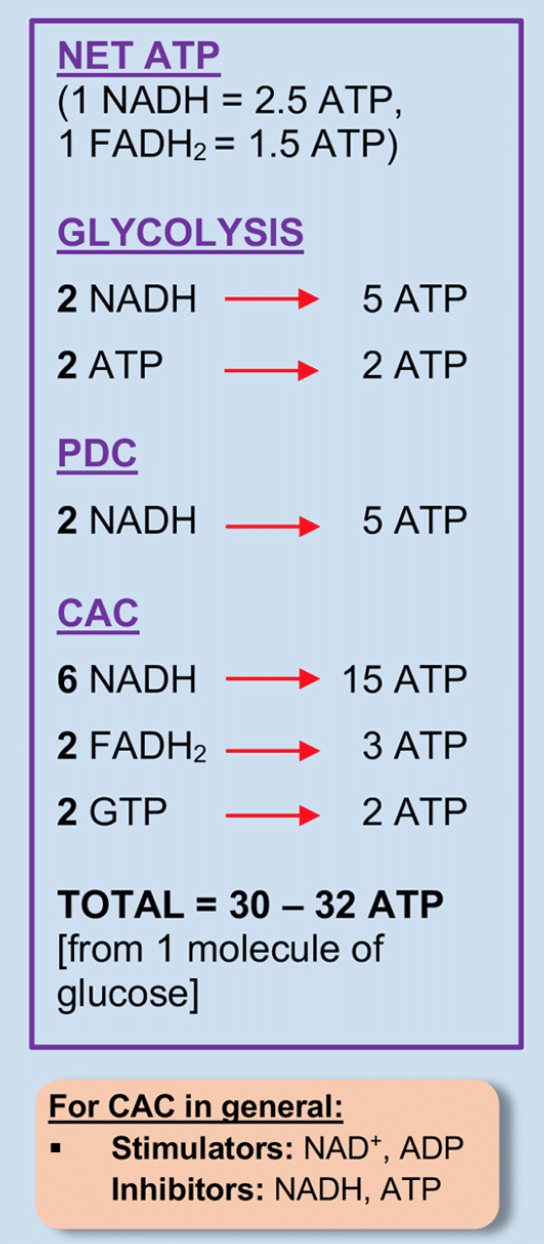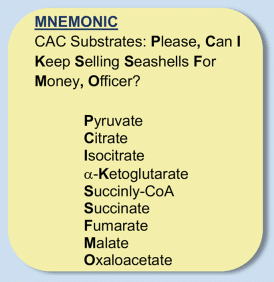
So you want to familiarize yourself with the MCAT citric acid cycle content? You’ve come to the right place! The citric acid cycle, also known as Krebs cycle or Tricarboxylic acid cycle (TCA), can seem quite complicated, but we’ve broken it down, step by step. Check out our guide to bio and biochem topics on the MCAT as well!
For a PDF version of this content, as well as more MCAT resources, click the link below!
And now, without further ado, let’s jump in…
Citric Acid Cycle Preparation
First and foremost, you’ll want to know the basics of citric acid cycle preparation, which is demonstrated in the following diagram:

Okay, now onto the actual citric acid cycle.
Citric Acid Cycle
Below is a breakdown of each step of the citric acid cycle, complete with a diagram and key control points.
Overall Reaction
2 acetyl groups + 6 NAD+ + 2 FAD + 2 ADP + 2 Pi → 4 CO2 + 6 NADH + 6 H+ + 2 FADH2 + 2 ATP
- In mitochondrial matrix (cytosol of prokaryotes)
- Objective: Oxidize acetyl-CoA to CO2, while producing energy
- Aerobic respiration (CO2 present)
Steps
- Citrate Formation
- Citrate Isomerized to Isocitrate
- α-Ketoglutarate and CO2 Formation
- Succinyl-CoA and CO2 Formation
- Succinate Formation
- Fumarate Formation
- Takes place on inner membrane
- GTP formed directly
- Malate Formation
- Oxaloacetate Regenerated


Key Control Points
Citrate Synthesis (Step 1)
- Irreversible
- Stimulated by ADP, NAD+
- Inhibited by NADH, succinyl CoA, citrate, ATP
Isocitrate Dehydrogenase (Step 2)
- Rate limiting step, irreversible
- Stimulated by ADP, Ca2+
- Inhibited by ATP
α-ketoglutarate dehydrogenase complex (Step 3)
- Irreversible
- Stimulated by Ca2+, NAD+
- Inhibited by succinyl-CoA, NADH
Tips and Reminders
Here’s a great mnemonic device for remembering the CAC substrates:

Also, as a reminder, the MCAT will not test on individual enzymes but major inputs, outputs, and regulatory enzymes.
A Final Word on MCAT Citric Acid Cycle Questions
Like with any of the processes tested on the Bio/Biochem section of the MCAT, you’ll want to go beyond just memorizing steps, in favor of actually understanding how mechanisms work with one another. For the MCAT Krebs cycle, it helps to study the steps alongside a visual representation.
Want more MCAT practice? Check out Magoosh’s MCAT prep, including hundreds of lessons, practice questions, and more!
Happy studying and good luck!






Leave a Reply